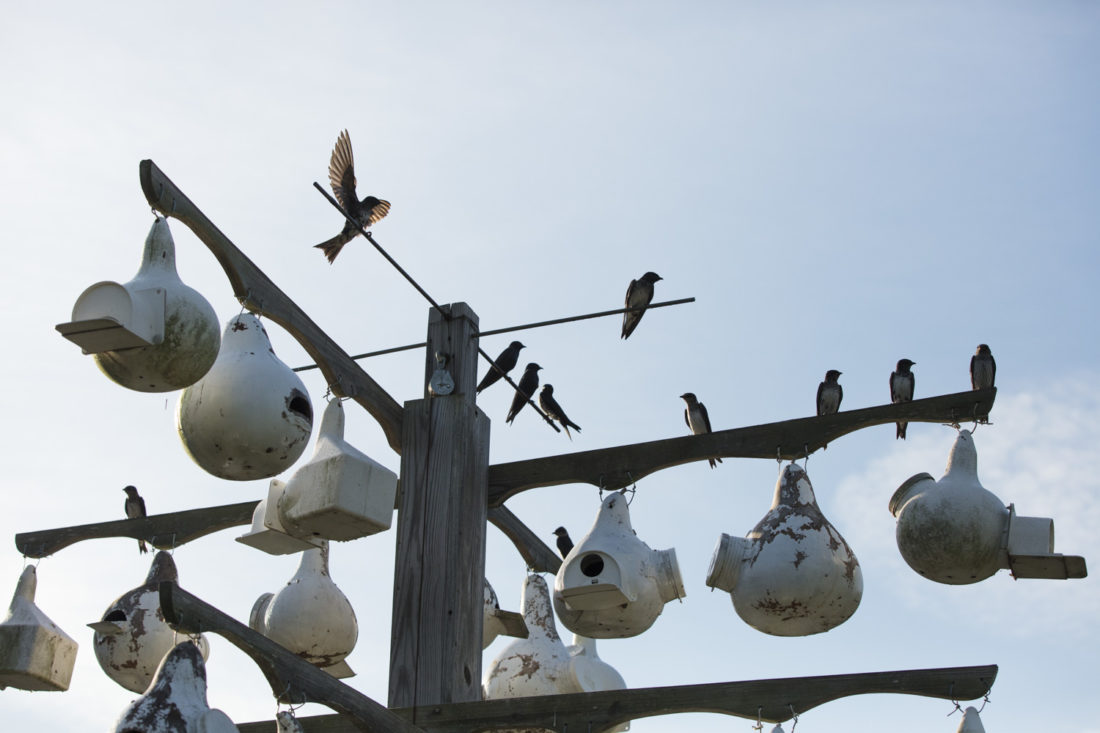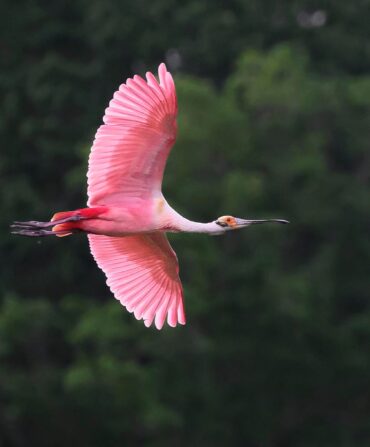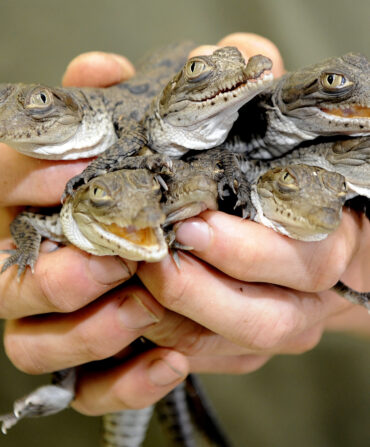Wind along country roads in many parts of the South, and you’ll see clusters of white gourds hanging high on poles. Those are bird hotels, housing for purple martins who migrate from South America into the region each spring and choose homes to nest and raise chicks.

Photo: Cary Norton
David Shaddix scanning the sky for birds.
David Shaddix is one of the many Southerners who has developed a special fondness for purple martins (read the full story, from the June/July 2018 issue of G&G here.) He spent nearly a decade perfecting his martin-house habitat and now sees some 135 nesting pairs flock to his property in Shelby County, Alabama each year. Although plastic “gourd” birdhouses are available at hardware and tractor supply stores, the homes have a special charm when they’re grown and crafted by hand. Here, Shaddix shares how to do it.
Grow and Dry (or Buy)
If you grow gourds from seed, look for packets marked specifically for “birdhouse gourds” (botanical name Lagenaria). Sow after last frost and let the vines spread out or crawl over a trellis all summer. Harvest in the fall, when the gourds have fully matured and the stems turn brown. “Hang them up in a shaded area—I hang mine in my barn—all winter to dry out and become usable,” Shaddix says.
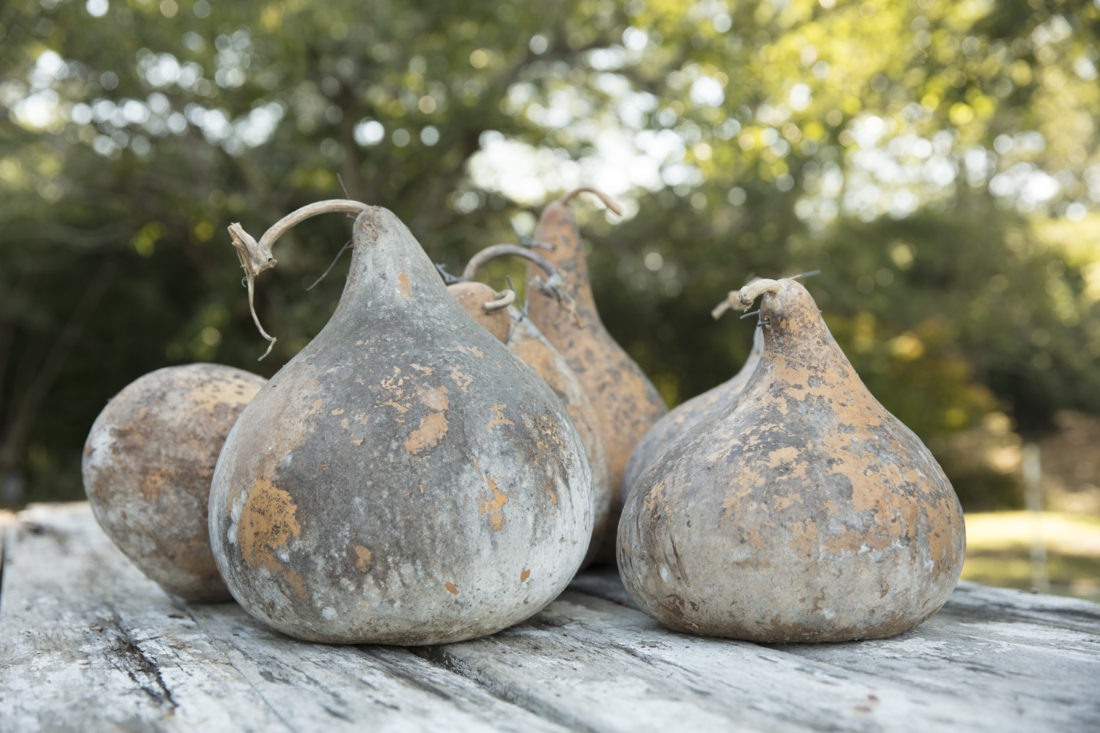
Photo: CARY NORTON
Dried gourds.
If you’re in a hurry or want to skip planting all together, seek out a farmer or nursery with dried gourds. “Out in the country, you’ll sometimes pass road signs that say ‘gourds for sale,’” he says. “Those stops are where some of my first gourds came from, and I saved seeds from year to year.” When the dried gourds are brown, hard, and fully dry, shake them to hear the seeds rattle around. That means they’re ready.
Make an Entrance
Drill five small drainage holes (David uses a ¼-inch or 5/16-inch drill bit) at the bottom of the gourd and another small hole in the top for attaching a hanging wire. Next, as you work on the doorway, shake out the dried pulp and seeds to save for next year’s crop.
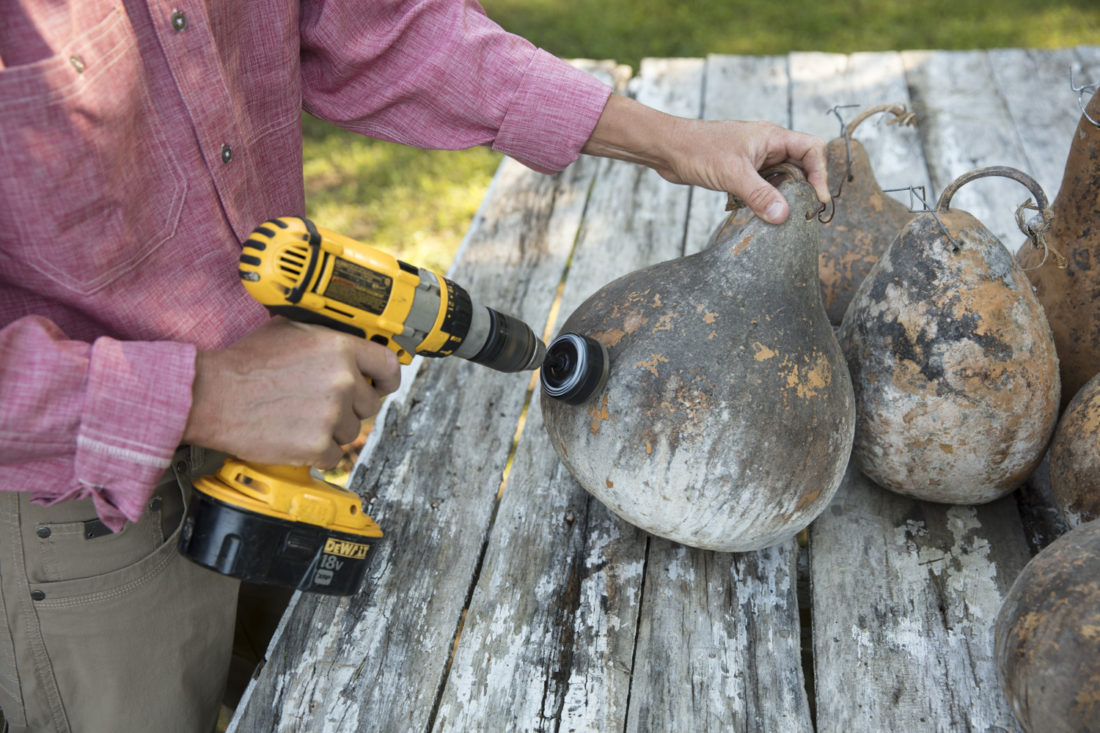
Photo: CARY NORTON
Shaddix starts a gourd entryway.
Shaddix recommends cutting a crescent-shaped entrance that is resistant to invasive starlings, which can edge out other birds. He cuts a crescent with a jigsaw and then uses a hand file to get the precise dimension and shape of a 1 ½-inch radius arch with 1 3/16-inch height at its apex. “I’m converting my holes to crescents, because the starlings started harassing the martins,” Shaddix says. “Sometimes, the birds will live side by side, but if you’re hanging just six or fewer gourds, the starlings will pester the martins to the point that the martins won’t stick around.” More information on crescent-shaped entryways can be found here.
Paint for Chill Factor
Birds are like us—the summer heat gets to them. “It’s important to paint the gourds white outside to keep the inside a little cooler,” Shaddix says. “We had trouble one year when we kept a few gourds their natural color and the babies started jumping out when it got hotter.” Baby birds leaping Kamikaze-like from their nests is not a pretty sight. Shaddix uses white spray paint, but he says any white exterior paint will work.
Finish and Hang
Stuff a little pine straw or other fibrous nesting material in each house. Shaddix loops electrical copper wire through the top holes to hang gourds together eight to twelve feet off the ground. You can find poles at many home-repair stores. “I recommend starting with a group of eight gourds, so the birds can see them more easily when they fly by,” Shaddix says. “And a lot of people think they should hang them twenty feet high, but the higher you hang them, the harder it is to maintain them, and they are more likely to blow down in a thunderstorm.”
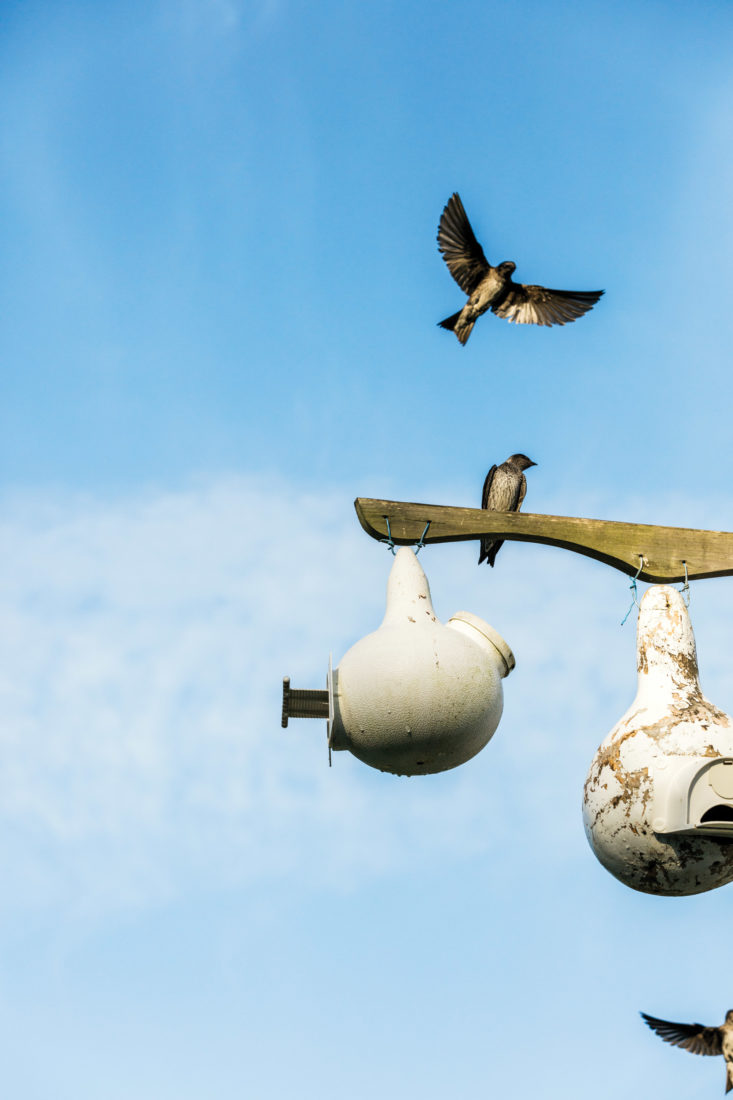
Photo: Cary Norton
Birds appreciate their homes.
Hang the gourds near your home or barn with sixty to eighty feet of clear open space around them. “The birds like an open area, but they don’t like to be long distances away from human housing,” Shaddix says. “They’ve learned to feel a bit safer from predators around people.” And for extra protection, install an animal baffle (Shaddix wads up netting and attaches it a few feet up the pole) to discourage snakes, raccoons, and possums from climbing and reaching the birds.
Wait and Hope
It can take years for purple martins to recognize your bird houses as safe havens. Shaddix knows a thing or two about patience (his first nesting pair didn’t arrive until seven years after he hung his first gourds), but it’s worth the wait, he says. “This is their summer home,” he says, “Where they come to have their babies and raise them.”
If you act quickly, you can still hang a few homes this year. “The first or second week of June is the end of the time when birds would come through to start a new nest,” he says. “But even if you don’t get any, keep your nests hung up a while. The birds will notice where they could make a home next year.”


